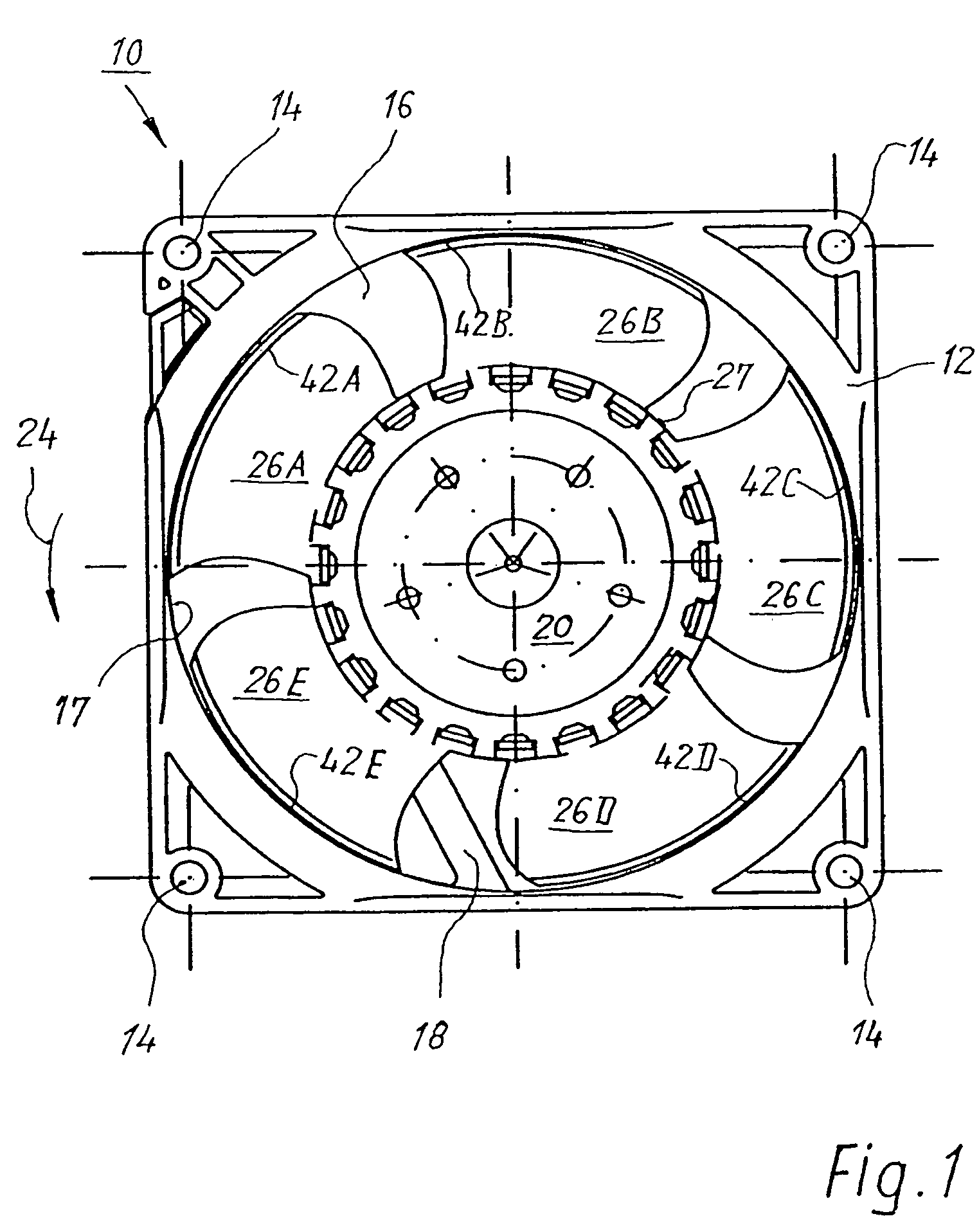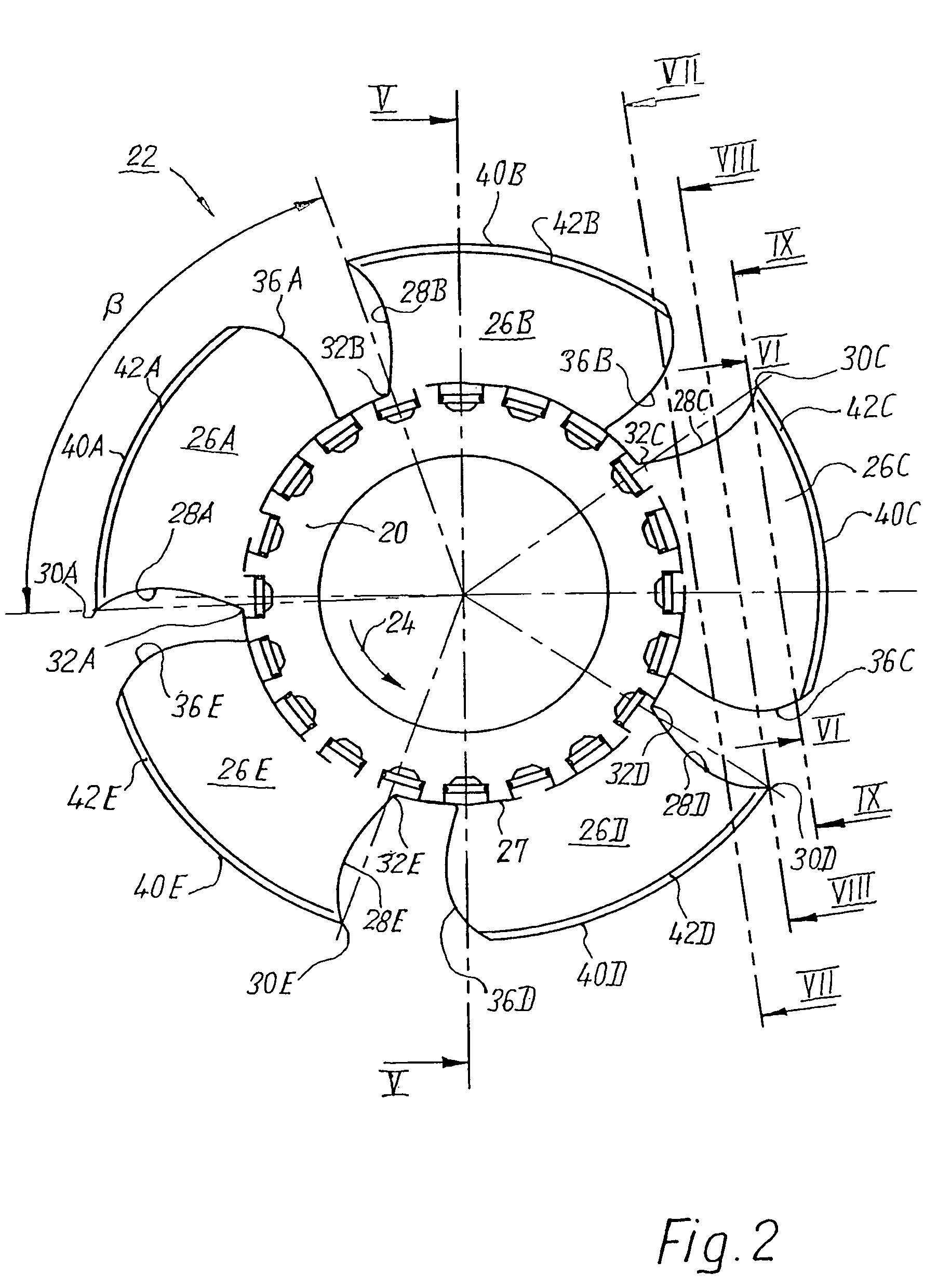Fan
a fan and fan body technology, applied in the field of fans, can solve the problems of limited sickling degree, axial length of such a fan might become too large, and achieve the effects of reducing noise level, minimizing air leakage, and reducing noise level
- Summary
- Abstract
- Description
- Claims
- Application Information
AI Technical Summary
Benefits of technology
Problems solved by technology
Method used
Image
Examples
Embodiment Construction
[0023]In the figures that follow, the same reference characters are used in each case for identical or identically functioning components, incremented by 100 if applicable (e.g. 122 instead of 22), and these components are usually described only once.
[0024]FIG. 1 shows an equipment fan 10 of ordinary design. The present invention can be realized implemented in an axial fan and, alternatively, in a diagonal fan. Fan 10, depicted in FIG. 1, has an external housing 12, at the four corners of which respective mounting openings 14 are provided and which defines in its interior an air conveying conduit 16, which conduit is limited toward the outside by a rotation surface 17 and in which conduit is rotatably mounted, via struts 18, the central hub 20 of a fan wheel 22 that, in operation, is rotated about a central axis 25 (FIGS. 4 and 5) by an electric motor arranged inside this hub 20. In FIG. 1, hub 20 rotates counterclockwise in the direction of an arrow 24. The air flow is such that th...
PUM
 Login to View More
Login to View More Abstract
Description
Claims
Application Information
 Login to View More
Login to View More - R&D
- Intellectual Property
- Life Sciences
- Materials
- Tech Scout
- Unparalleled Data Quality
- Higher Quality Content
- 60% Fewer Hallucinations
Browse by: Latest US Patents, China's latest patents, Technical Efficacy Thesaurus, Application Domain, Technology Topic, Popular Technical Reports.
© 2025 PatSnap. All rights reserved.Legal|Privacy policy|Modern Slavery Act Transparency Statement|Sitemap|About US| Contact US: help@patsnap.com



